
First and foremost, Anodyne 2: Return to Dust should be praised for how much was achieved with a two-person team (aside from QA and some music). In fact Analgesic Productions have quickly established themselves as making curious single-player adventures. As their latest production Anodyne 2 continues the trend, it seems to pull on mechanics of their past works beyond the first Anodyne. Is Anodyne 2: Return to Dust worth your time, or does it just leave you feeling numb?
Anodyne 2: Return to Dust
Publisher: Analgesic Productions
Developer: Sean Han Tani, Marina Kittaka
Platform: Windows PC (Reviewed), Linux, Mac
Release Date: August 12th, 2019
Players: 1
Price: $19.99
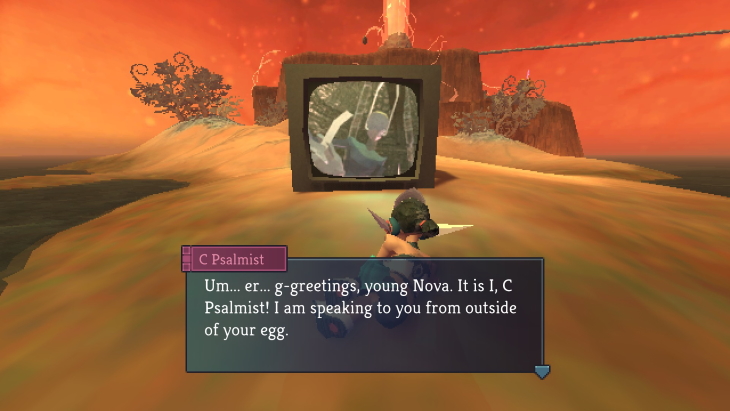
Your character – Nova – wakes up on a beach, and the nearby television shows two angelic figures telling you that you are inside an egg. It only gets weirder from there. After being “born”, you learn you are on the island of New Theland, where everyone worships “The Center” as a god.
You have been created to suck up Nano Dust- sentient bacteria hell-bent on destroying the Center, by corrupting citizens and their desires. You do so by shrinking down to microscopic size and clearing the Legend of Zelda-esque dungeons within their bodies; solving puzzles, and beating the bosses. As you gather dust, it can be recycled to push back a storm and access more of the island.
First and foremost- you do not need to play Anodyne 1- as the game itself tells you when you start. Much like Final Fantasy or Dragon Quest, while there may be recurring themes and references, it is not needed to enjoy the story. There is some post-game content that makes more reference to the first game, but even then you can easily work out what it all means.
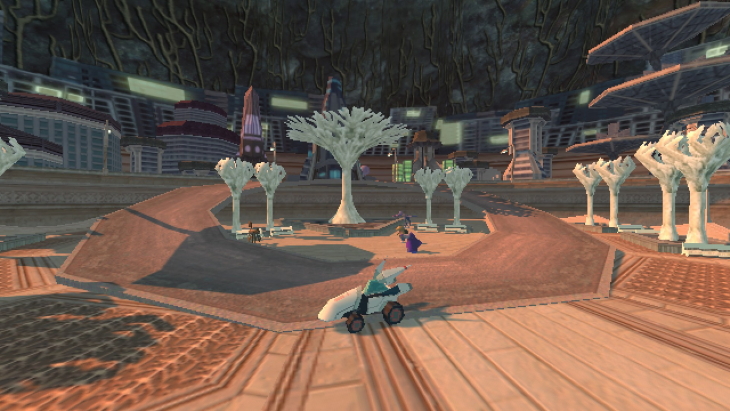
The game prides itself on surrealism, with just enough logic to help make the weird stuff stand out. Such examples within the first two hours include a tree-sculpting society (because “bio-trees” are so rare), and someone “watching the house” while their folks are away (because the house is a giant, living, dog-dinosaur made of a house).
It also helps sell some of the more creepy aspects. One individual suffering from Nano Dust had his sense of taste increase- and his skin to turn into tongue. Now he looms over a market, and talks about wanting to taste anything and everyone. While never as dark as Anodyne 1, there are still a few moments that can be a little creepy.
Half the fun is getting surprised by what you see. How weird the people are, and the quirky humor (some of which borders on meta). As such, it can be divisive. You may find yourself wanting to dive further into the wonderland, or quickly grow tired of it. Nothing ever feels obnoxious however.
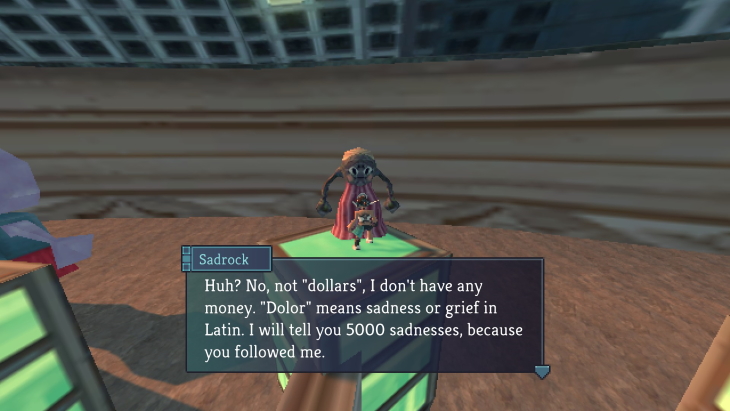
Surprises also includes a few plot-twists. What is expected quickly becomes overridden, then goes back to “normal” but recontextualized. These twists are always aided by how the game is presented. You get a sense something is “off” about various NPCs and the world, making you grow suspicious. Are their dedications obsessions? Did you help or hinder them?
Even so, these twists apply more to gameplay. Despite a strong plot, it can be a little predictable towards its end. With themes of independence, growing up, religion versus freedom, and purpose- It is not hard to see what will happen overall- even if the exact details can still throw you for a loop.
The plot maybe familiar, but there are still surprises along the way. The surreal-ness evokes humor, confusion, and fear- without feeling like a jumbled mess. You always want to push on further to find out what is going to happen next- be it something strange or the next change.
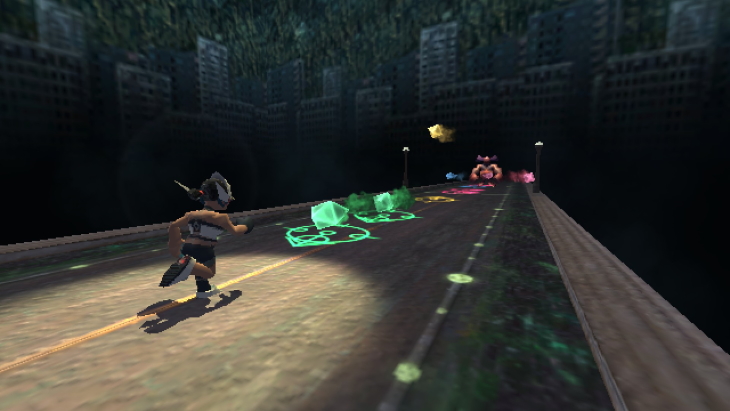
Gameplay is divided between exploration with mild platforming, and dungeons within a person. Despite plenty of landmarks and a few NPCs, everything can feel a bit spread out. While you can transform into a car to make this quicker, you do not actually spend that much time travelling. It just feels like it.
While you chat to NPCs, you find those who are clearly suffering. Repeatedly talking to them eventually opens them up to diving into their mind and body. After a brief DDR style mini-game (which is off-beat to the music), you enter the dungeon.
As you can tell, there is rarely a test to unlocking a dungeon. In fact (aside from one or two puzzles, basic platforming segments, or exploration) all you need do is keep talking to an NPC to unlock their dungeon. It feels like a missed opportunity for something more interesting, and makes the overworld less interesting as a result.
Exploring the world is a rather strange affair. While it feels like it is a long time between landmarks and NPCs, the actual time that passes is not a lot (bar one annoying moment where your character is made to walk slowly). It is most likely intentional to make the world feel larger, but with a lack of exploration it makes it feel more barren and spread-out than it is.
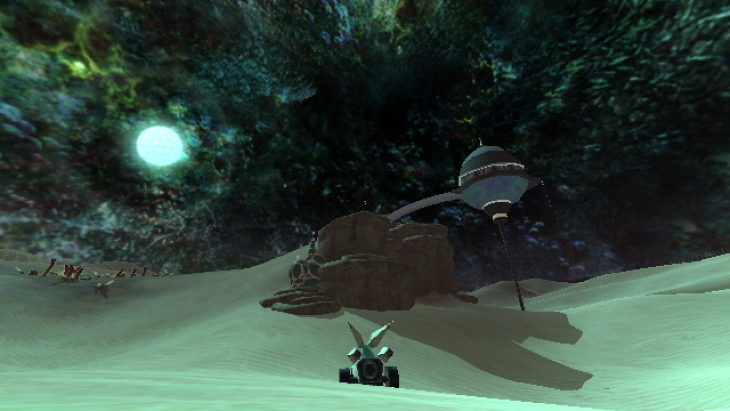
Thankfully, some exploration is rewarded with extra cards and health increases. Levels are built with landmarks to encourage you to explore and clamber around.
About mid-way through the game, a new form of collectible is scattered across the world in the form of Meta Coins. You need less than half of them to buy extra content such as testing levels, developer commentary, early drafts of levels, and even poetry.
Even with some of them being hidden out-of-bounds (and getting them is encouraged), there are several issues. Being it is introduced mid-way through the game, exploring new areas becomes dictated by the coins, rather than landmarks as prior levels had.
Combined with what the coins can be spent on may not be appealing to some, and it feels like a misfire. While another collectathon letting you buy things such as costumes, abilities, or access to later levels would have been generic- but I cannot help but think the meta coins here are mistimed and misused.
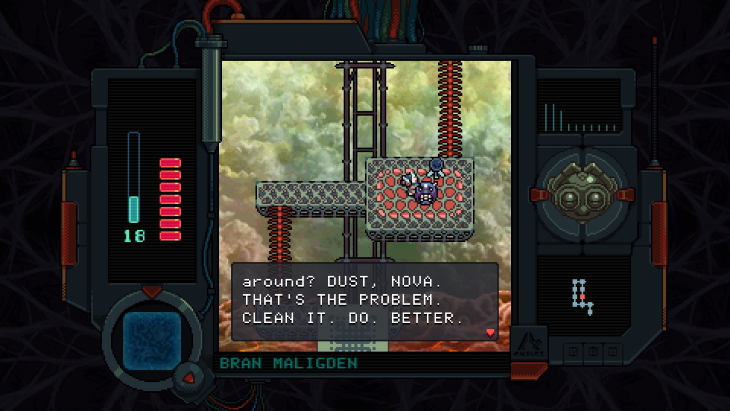
If the elements of the overworld are a mixed bag, the dungeons inspired by classic Legend of Zelda are a far better affair. While you only have the ability to move around and suck-up things with a vacuum, every dungeon has its own puzzles elaborating on these simple mechanics.
You may be tasked with killing certain enemies while leaving others alive to unlock gates, or navigating pitch-black lower floors that perfectly mimic the lay-out above. While not all the dungeons are smash hits, I can only think of two dungeons out of the 12 or so that felt like bad dungeons (one employing fetch-quests).
The purely logic based puzzles can be a little easy, with those involving skill and timing being more challenging. Early bosses have a rather long hit-stun which can be abused, and may be the reason bosses are almost entirely dropped from then on.
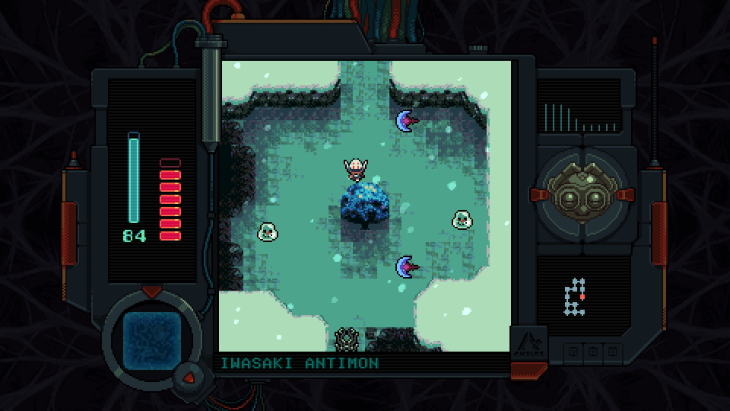
Overall the dungeons are a delight though. Some of the later dungeons become as complex as four or more dungeons put together. You will always have something new to see, and several of them are bound to memorable.
The reason for completing these dungeons is to earn cards and collect dust. Dust can be used to unlock more areas to explore, and cards can be used to collect more dust. I never found myself needing to grind for dust except for the very end, and even then it was a fairly swift affair. As long as you remember to collect dust when you see it you will be fine.
The only annoyance is having to traipse back to the center of the map to deposit your dust or all the way to the beginning to deposit cards you earned. While it makes sense for presentation and narrative, it does compound the aforementioned issue with everything feeling world’s apart.
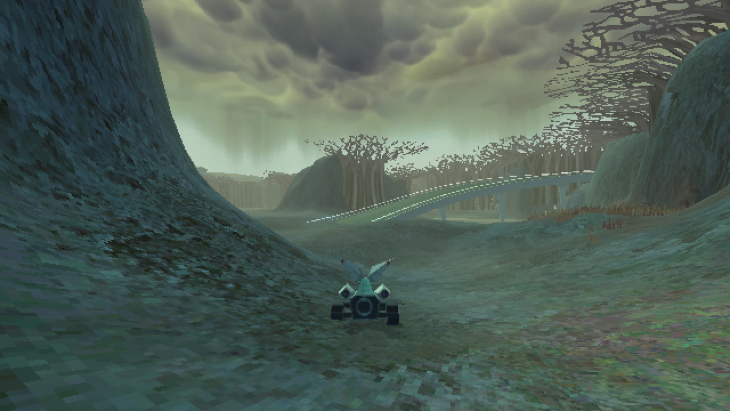
While the overall experience is fun, there is one major caveat. The whole experience took me 10 hours to complete both endings (completing one returns your save to just before you attempted an ending).
Meta Coin gathering is hardly a fair way to extend the gameplay time, but there are options to incorporate speedruns. Replay value is also unlikely to give you a new experience. Whether the price-tag is reflective of the average gameplay time will come down to personal taste, and finances.
Despite a few issues, there is nothing quite like Anodyne 2’s gameplay. The downtime arguably helps with the game’s presentation, making the experience almost a little comfy and relaxing. While certainly a throwback to the eras it tries to emulate, it can lack bite.
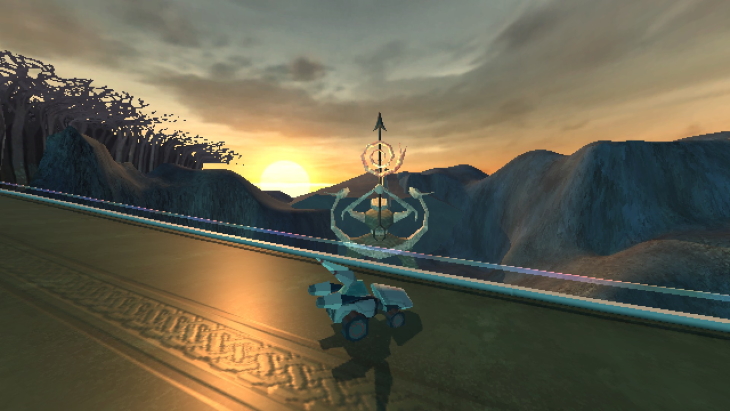
The game’s style oozes retro appeal. The overworld evokes a classic PlayStation style of low-poly and low-resolution textures. There is even a filter over the top to slightly pixelate the screen, attempting to evoke ancient resolutions. There are a few lighting tricks that were not technically possible back then (or did not work nearly as good), but it is easily forgiven as it still looks great.
This aesthetic helps sell the surreal-ness of everything. Some character designs are truly bizarre, and their low-poly look somehow works fantastically. While distant architecture can look great, there are times once you get up close that muddy textures can take you out of it. Or throw you back to your childhood, depending on the individual.
Sadly, too many limitations were used in some cutscenes. Some scenes utilize text describing what happened, rather than showing it. While this is fine for the most part, it is especially damning at the game’s ending- undercutting some more dramatic moments. Some simple animation (much like the era it is trying to evoke), would not have been criticized.
The 2D realms perfectly capture the spirit of games such as the classic Legend of Zelda. Each world has a distinct theme in design and color palette. In addition, the bright colors help set it apart from the more muted overworld. While the game has a clear style and looks great, the extra color and well drawn sprites almost make the 2D world look better than the 3D one.
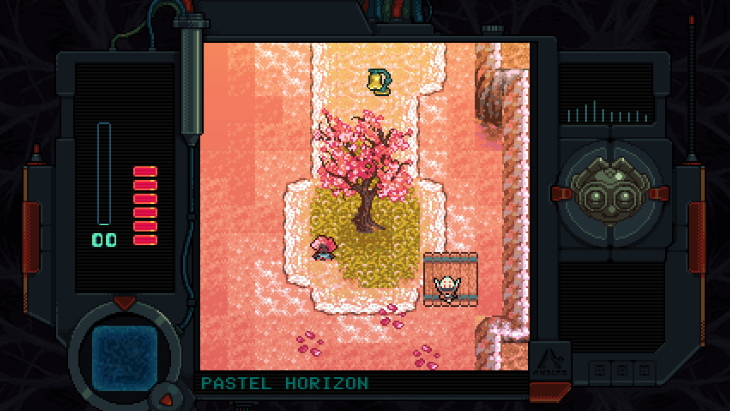
Audio continues the overworld’s aesthetic. As you explore, it feels somehow foreboding and comforting at the same time. This perfectly mixes into the world’s design and narrative. It also helps make those long treks feel less tedious, as it is a genuinely enjoyable track to have in the background.
The 2D dungeons are usually much more upbeat, and what you would expect from game music of the era. While it uses more modern synth instruments as oppose to chip-tunes, it is hardly out of place. Much like the graphics, the simplicity being executed so well combined with a less subdued tone overall can make the 2D world’s soundtrack feel more interesting.
Sound effects are satisfying, especially those related to collection (such as meta coins or sucking up dust). The overworld OST combined with natural sounds such as blowing winds in the desert or lapping waves at the shore, reinforces how desolate everything outside of the city is.
Whether it be the bevy of retro sound-effects in the menus, and the soundtracks for both the 2D and 3D worlds, the game sounds as good as it looks. Much like the overworld itself, the overworld soundtrack stands out, being quite surreal but very interesting.
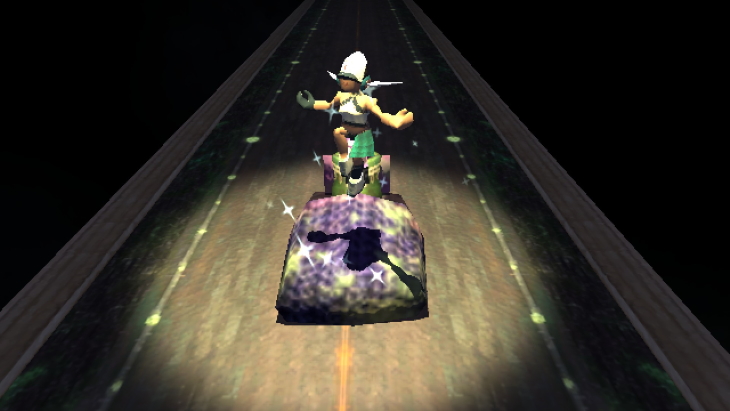
Anodyne 2: Return to Dust is a testament that indies can go where AAA fears to tread. A unique concept supported by strong gameplay that evolves frequently enough to keep you playing- right until it ends all too soon. At the bottom of it all, there is nothing quite like it.
Anodyne 2: Return to Dust was reviewed on Windows PC using a review copy provided by Analgesic Productions. You can find additional information about Niche Gamer’s review/ethics policy here.